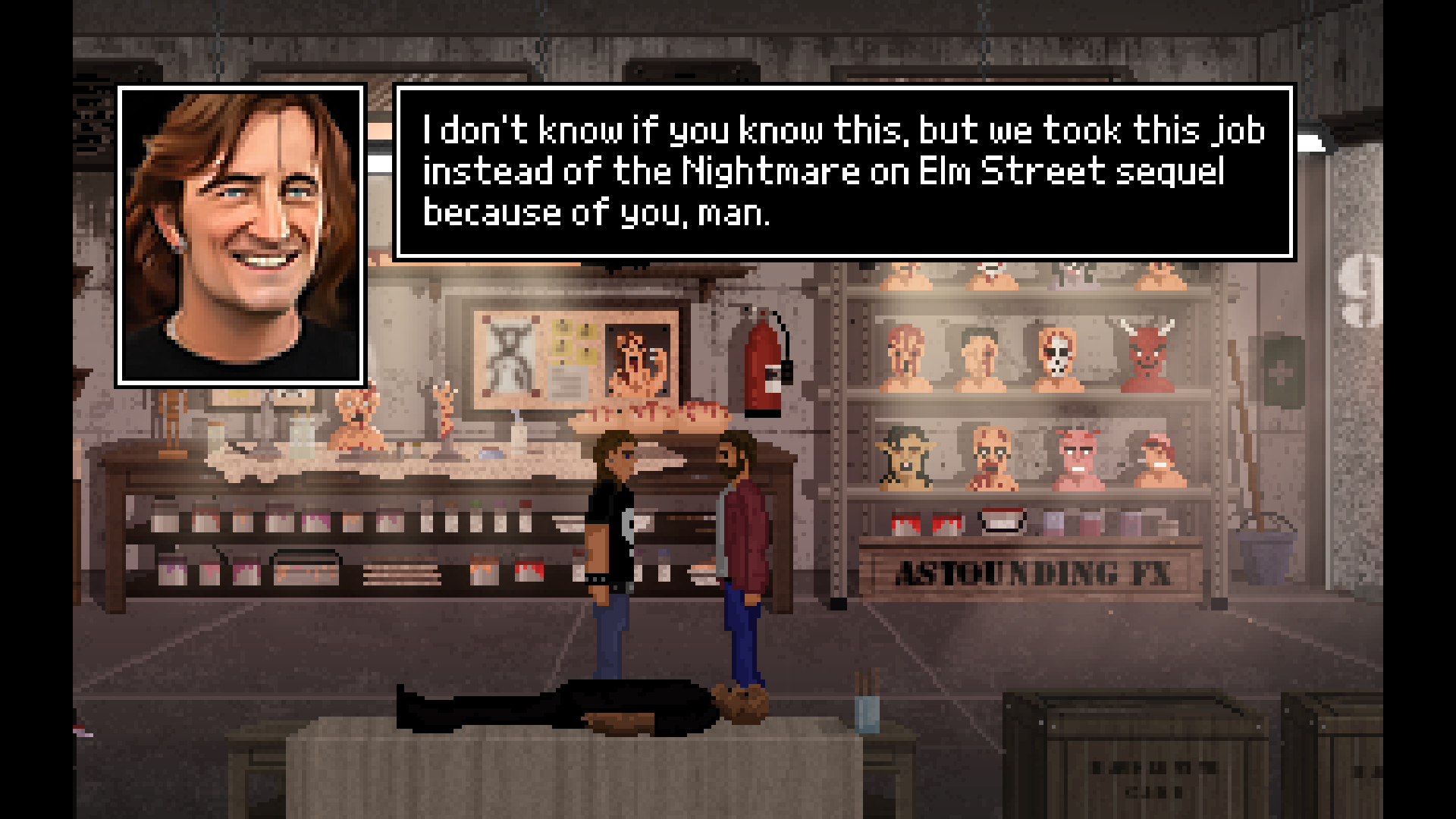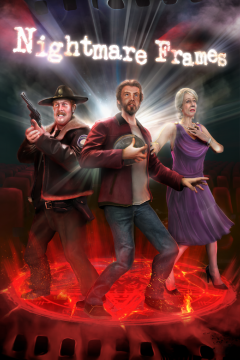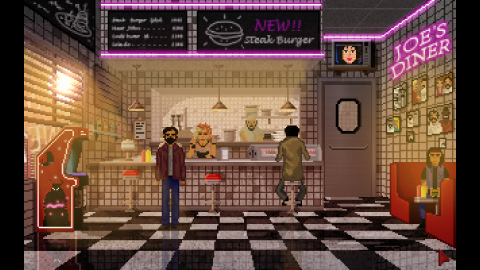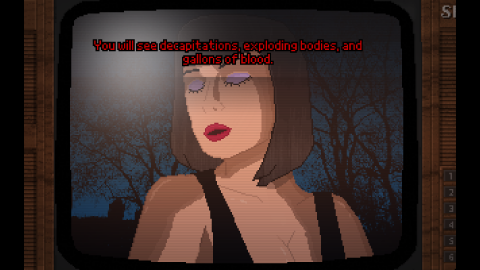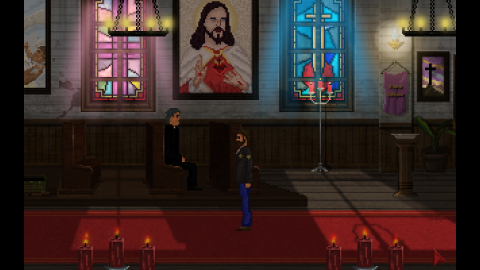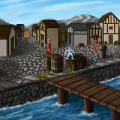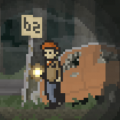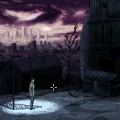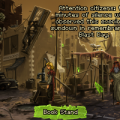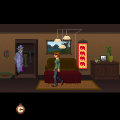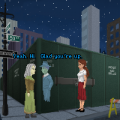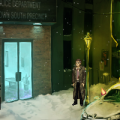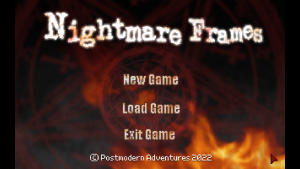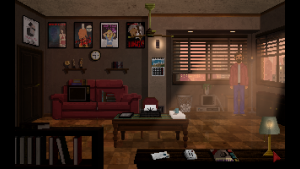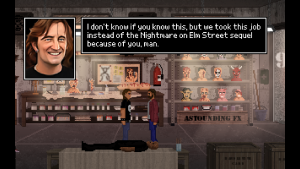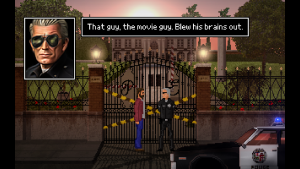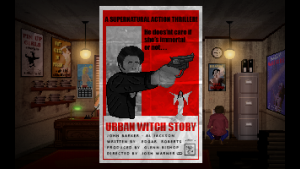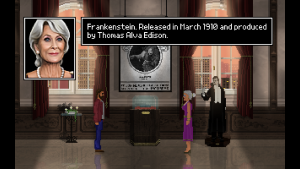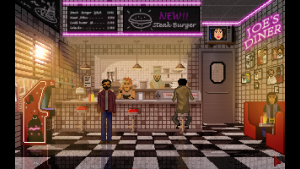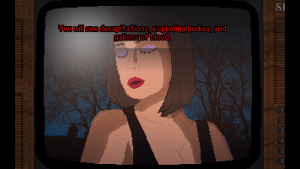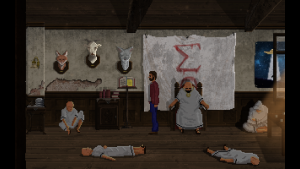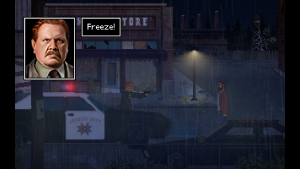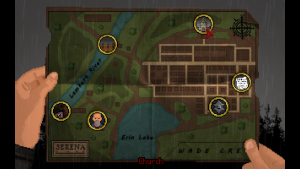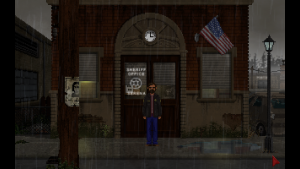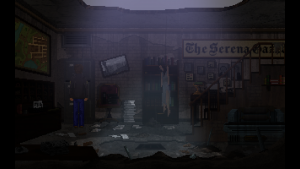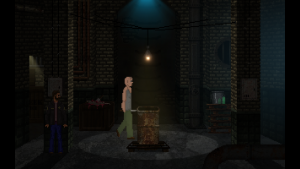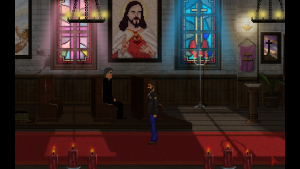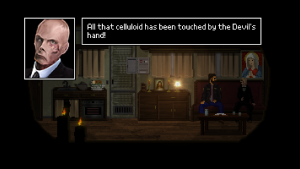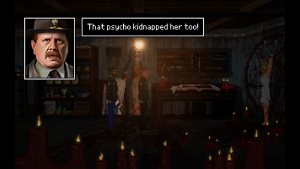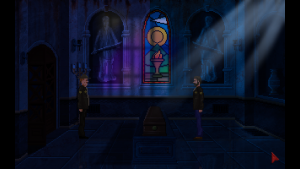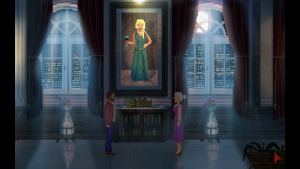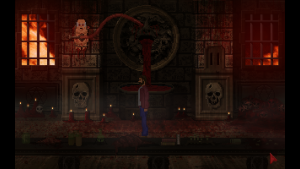Nightmare Frames is the first commercial project by indie dev José María Meléndez, who produces games under the name Postmodern Adventures. Meléndez previously released free games that embodied the LucasArts and Sierra aesthetic, such as 2020’s Urban Witch Story, which played like a superior Police Quest with a dash of the supernatural. Nightmare Frames released in 2022, and in comparison, feels something like Kathy Rain meets Silent Hill meets every horror film from the ‘80s – the slasher flicks, the psychological deep dives, and everything in between. It’s also a highly compelling story about one disgruntled Los Angeles screenwriter named Alan Goldberg slowly learning to love his craft, and maybe even becoming a better person along the way.
Alan Goldberg writes B-movie scripts in the world of Nightmare Frames, and his Lunatic screenplays have done well enough to garner him a small amount of fame. But Alan snubs his nose at horror flicks, seeing them as trashy stepping stones to his true passion, which is to pen a script for a big-budget drama. After a chance series of events leads Alan to the doorstep of a rich Hollywood businesswoman named Helen Westmore, who collects lost horror films like museum artifacts, our mildly arrogant screenwriter is tasked with finding director Edward Keller’s last film – rumored to be the scariest movie of all time.
“Ironically, the main influence of Nightmare Frames is not from an ‘80s movie, but the film The Hills Run Red by Dave Parker, released in 2009,” Meléndez said in an interview. “But technically any movie or book revolving ‘lost horror movies’ could be counted in as well. For instance, 2005’s Cigarette Burns by John Carpenter and [the 1989 novel] Ancient Images by Ramsey Campbell.”
Brian de Palma’s 1984 film Body Double – an erotic thriller about the seedy side of Hollywood – was also a major influence for the game’s first act, which takes place entirely around LA, from glitzy studios filled with unpleasant stars to street corners with washed up directors-turned-beggars. Aside from the City of Angels, the game features two other locations – an eerie town in northern California named Serena, and a surprise area at the end of the game that amps up the gore to Hellraiser levels, or at least as close as you can get to Hellraiser in a pixelated point and click game.
“When I started sketching Nightmare Frames the plan was to do something smaller,” Meléndez said, when reflecting on the game’s expansive size. “Everything would happen in Hollywood. But then I got more and more interested in the character of Edward Keller – the director of the cursed film – and in the film itself. What started as a McGuffin ended up taking the spotlight. So I had Alan Goldberg, the main character, investigate further on that. That’s when the act in Serena was born. The three acts of the game helped pace the horror component. Hollywood is a safe place but full of terrible people. In Serena, the horror starts taking shape and an eerie feeling starts to grow. And in the last act, the danger is more explicit.”
The three regions in Nightmare Frames add unexpected twists and turns to Alan’s scavenger hunt, and as the holier-than-thou screenwriter jumps from location to location, we can see slight changes in his characterization. In LA, for instance, Alan is forced to go to the television studios of Eliza (a clever stand-in for Elvira, the real-life Mistress of the Dark), who he formerly blasted for cashing in on horror schlock and showing lots of skin. But after Alan learns of Eliza’s personal connection with Edward Keller, as well as the fact that she legitimately hopes one of her viewers will be the next John Carpenter, he changes his tune, perhaps realizing there’s more to the horror genre and its fans than he originally thought.
Alan’s biggest shifts occur in Serena, the creepy town that makes up the bulk of Nightmare Frames’ second act and was inspired by the equally unsettling towns in the adventure games Dark Seed II and Harvester, according to Meléndez. There, Alan meets the bumbling Police Chief Bowman, who is a far cry from the sophisticated residents of LA but proves to be the game’s staunchest ally, even approaching something like a friend. The pair face a number of frights as they sneak through Serena’s muddy and supposedly haunted streets, and they soon learn that Edward Keller manipulated the entire population of the town in order to film his unreleased eldritch masterpiece. While Alan remains straight-faced throughout most of the ordeal, it becomes clear by the end of the game that his time alongside Bowman has slowly changed him into a more empathic human being who isn’t as obsessed with becoming a Hollywood golden child.
“Alan is so fearful for his own future that nothing (not even the supernatural) will scare him away of that cobweb that is Hollywood,” Meléndez said. “It is common for the main characters in adventure games to be honorable, good people. Players will then empathize with them during the first minutes of gameplay. I wanted to turn this around by writing a character that isn’t as sympathetic, but more human, with his virtues and flaws. I was initially scared that people wouldn’t relate to the main character, but luckily, people ended up empathizing with Alan Goldberg.”
This character evolution is part of what makes Nightmare Frames a compelling experience, even for players unversed in horror who have no idea that Alan’s Lunatic movies are an amusing riff on the Friday the 13th franchise. The rest of the game is no slouch either, from the well-drawn graphics, detailed character portraits, and synthwave soundtrack by Stefano Rossi. The puzzles are also solid, if occasionally guilty of amusing adventure game logic. (At one point, Alan has to revive a certain drugged person, and his only option is to ask a doctor who hilariously tasks him with traipsing about LA to find the vital ingredients, which is of course what a medical professional in an adventure game would do.)
Nevertheless, Nightmare Frames is a top-notch experience for point and click fans, a must-play for all lovers of horror, and a title that sets a high bar for Postmodern Adventures’ first commercial release. And despite the high praise that the game has received, Meléndez remains humble.
“In my previous games, I already tried to give my best so the player would perceive the product as a polished and professional one,” Meléndez said. I guess in this game, it being a commercial product, I tried to go the extra mile in the care I put to certain aspects that might have made it look less worthy otherwise. I have been more careful, so to speak. The main difficulty has been working with such a modest budget to approach things like music or translations. I have been very lucky that I could count on the help of great collaborators, who gave their everything on the project. It is thanks to them that all of these issues could be overcome.”
